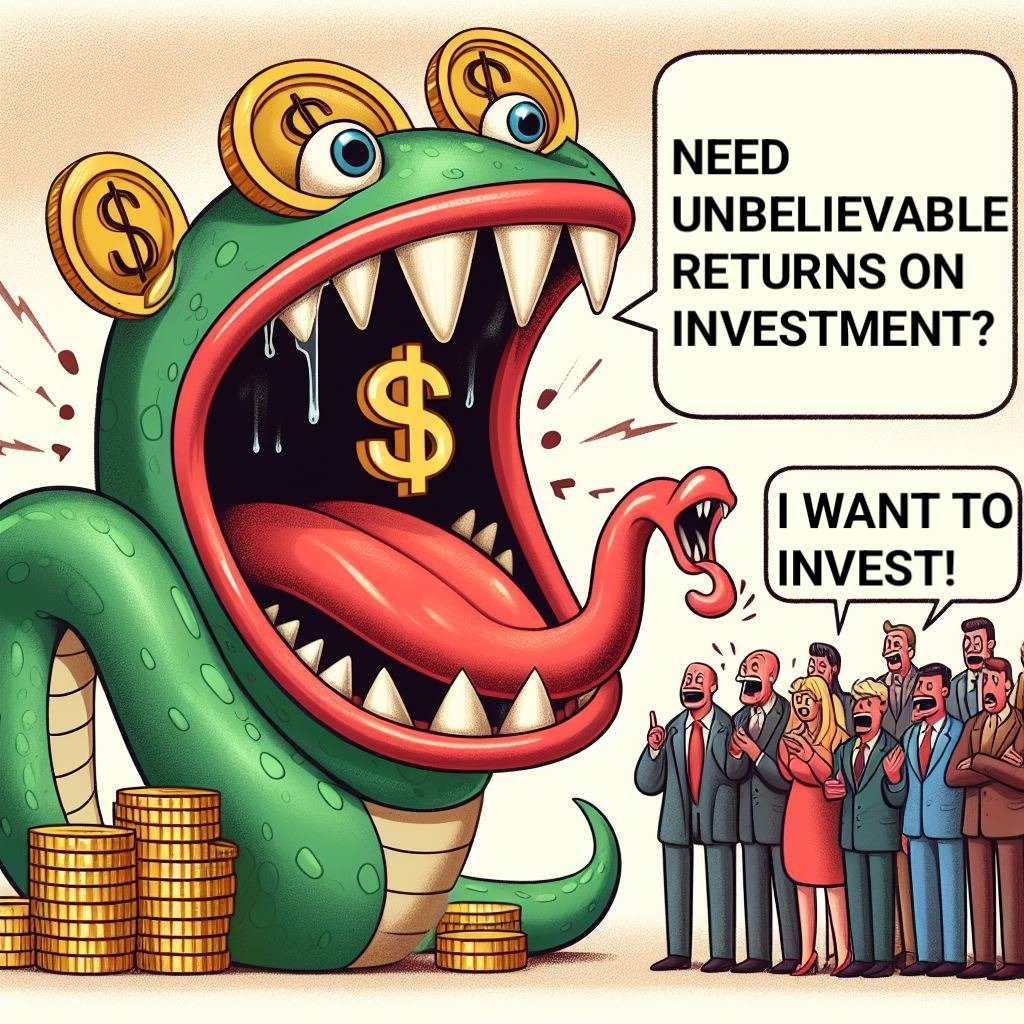What is Bond Fraud?
Bond fraud occurs when individuals or organizations deceive investors into purchasing worthless or fraudulent bonds, often resulting in significant financial losses. Bonds are a popular investment choice for many individuals, offering a fixed income stream and a relatively safe haven compared to stocks. However, just like any investment, bonds are not immune to fraud. These schemes can take many forms, including:
- Forged or Counterfeit Bonds: Creation and sale of fake bonds under the guise of legitimate investments.
- Misrepresentation of Bond Terms: Altering crucial features like interest rates or maturity dates to entice unsuspecting investors.
- Sale of Unregistered Bonds: Offering bonds lacking regulatory approval, providing no legal protection to investors.
- Pump-and-Dump Schemes: Artificially inflating bond prices through false marketing, followed by profit-taking and leaving investors with worthless assets.
Bond fraud can inflict severe financial harm on individuals and institutions, potentially leading to complete financial devastation. Key reasons to stay informed and shield yourself from bond fraud include:
- Loss of Investment Principal: Risk of losing the entire invested amount in fraudulent bonds.
- Missed Interest Payments: Fraudulent bonds often fail to deliver promised interest, resulting in lost expected income.
- Tax Implications: Potential responsibility for taxes on income never received from a fraudulent bond.
- Credit Rating Damage: Negative impact on credit scores, hindering future loan and credit opportunities.
- Emotional Distress: Being defrauded can be emotionally draining and stressful.
Here are some exmaple of one of the biggest bond frauds:
- Bernie Madoff’s Ponzi Scheme: Among the largest financial scandals, Madoff orchestrated a Ponzi scheme, defrauding investors with fake bonds.
- Municipal Bond Fraud in Detroit (2012): Detroit’s bankruptcy led to substantial losses for investors holding municipal bonds.
- Microcap Stock Fraud: Fraudulent bond offerings linked to promises of high returns from microcap stocks, often small and thinly traded companies.
Common Techniques Used by Bond Fraudsters
Bond fraudsters employ a range of cunning tactics to entice unsuspecting investors. Here are some of the most common ones:

Unrealistic Promises of High Returns
Fraudsters often lure investors with promises of extravagant returns that surpass realistic expectations. Caution is advised when faced with offers guaranteeing high returns with minimal risk, as higher potential returns usually correlate with increased risks.
Unsolicited Offers and Cold Calls
Fraudsters may initiate unexpected contact, pitching “hot” bonds or investment opportunities. Treat unsolicited offers as warning signs and refrain from divulging personal information to unknown callers.
Pressure Tactics and Urgency
Creating a false sense of urgency is a common ploy, pressuring investors to make quick decisions under the pretext of missing out on a lucrative opportunity. Take your time, conduct thorough research, and resist making impulsive investment decisions.
Fake or Misleading Information
Fraudsters may present inaccurate information about bonds, such as overstating issuer creditworthiness or distorting bond terms. Utilizing fake documents or websites to appear legitimate is another tactic. Verify all information independently before committing to any investment.
Impersonation of Legitimate Institution
Impersonating reputable financial institutions or government agencies is a strategy to gain trust. This involves using authentic-looking logos, phone numbers, or email addresses. Always verify the identity of anyone claiming to represent a financial institution before engaging.
Red Flags in Bond Investing
Red flags in bond investing are warning signs that suggest a potential investment opportunity may be fraudulent or risky. These red flags can appear in various forms, including:
Affinity fraud, a tactic where scammers target specific groups like religious or ethnic communities, relies on exploiting trust and community ties. Perpetrators may pose as trusted figures within the group, offering investments aligned with the community’s interests to appear legitimate.
Boiler rooms, characterized by high-pressure sales tactics, employ aggressive measures such as cold calls to coerce investors into quick decisions without proper research. These operations thrive on chaos, using misleading information and promises of high returns to manipulate investors. The environment of these operations creates urgency, making it challenging for individuals to make informed choices.
Ponzi schemes, another concern, sustain themselves by using new investors’ money to pay earlier investors, presenting a facade of consistent high returns. The scheme collapses when attracting new investors becomes unsustainable. Regular payments to investors further creates the illusion of legitimacy.
Effective Strategies to Protect Yourself from Bond Fraud
Protecting yourself from bond fraud requires vigilant strategies. Firstly, ensure the legitimacy of your broker by utilizing the FINRA BrokerCheck tool, offering insights into their history, qualifications, and any disciplinary actions. Additionally, for publicly traded bonds, verify the security through the SEC EDGAR database, confirming the authenticity of the investment. Thorough research into the financial standing and creditworthiness of the bond issuer is essential; consult independent credit ratings and review annual reports.
Never respond to unsolicited offers to safeguard your financial well-being. Exercise caution with cold calls and emails, refraining from sharing personal information with unknown entities. Avoid clicking on suspicious links, as they may lead to fraudulent websites. Ignore high-pressure tactics, take your time, and conduct thorough research before committing to any investment.
Protect your personal information by never sharing sensitive details over the phone or email, especially if the contact is unsolicited. Strengthen your online security with robust passwords. Regularly monitor your credit report to detect and address any suspicious activity promptly.
Educate yourself about bond investing to make informed decisions. Understand the various types of bonds and their associated risks and rewards. Be aware of risks such as interest rate, credit, and inflation risks. Consider consulting with a qualified financial professional, especially if you’re new to bond investing, to align your choices with your investment goals and risk tolerance.
Reporting and Recovering from Bond Fraud
When you realize you have been a victim of bond fraud. So you can take some specific measures. Your initial and most important step is to reach out to your financial institution without any delay. Explain the details of the fraud, follow their instructions for securing your accounts, and report the incident officially.
It is advisable to consult a legal professional specializing in securities fraud. Such a lawyer can expertly deal with the legal complexities, provide guidance on your rights, and actively assist in the process of recovering your losses. Avoid sharing personal information via phone or email.
Educational resources from organizations like the SEC provide valuable information about identifying scams and protecting yourself from fraud. You can also submit a tip about the fraud on the SEC here.
Joining support groups allows you to share experiences and get emotional support from others who have faced similar situations. Recovering from bond fraud is a gradual process that requires time and effort. By taking proactive steps, seeking help, and staying informed, you can increase your chances of rebuilding financial security and moving forward.
Conclusion
Bond fraud poses a significant threat to investors, with potential devastating consequences. Mitigating the risk involves comprehending the common tactics employed by fraudsters and proactively safeguarding oneself. In the unfortunate event of falling victim to bond fraud, taking immediate steps to report the crime, recover losses, and shield against additional harm is crucial. It’s essential to recognize that you are not navigating this alone; numerous resources exist to assist you during this challenging period. Through proactive measures, seeking assistance, and taking necessary actions, you can effectively recover from the impacts of bond fraud and work towards rebuilding your financial security.
FAQ
What are some specific red flags that I should look out for to avoid bond fraud?
Always look for unrealistic promises of high returns, unsolicited offers or cold calls, and pressure tactics indicating urgency. Be cautious of fake or misleading information and impersonation of legitimate institutions. Affinity fraud, boiler rooms, and Ponzi schemes are also warning signs.
What are some signs that I may have been a victim of bond fraud?
Signs include unexpected financial losses, missed interest payments, and discovering forged or counterfeit bonds. Be aware if pressured to act urgently or encounter discrepancies in bond terms, these signs are very suspicious in bond fraud and other frauds also. Unexplained account changes or unauthorized transactions are red flags.
What are some tips for protecting myself from bond fraud in the future?
Protect yourself by verifying brokers through FINRA, checking SEC EDGAR for legitimacy, and researching bond issuers. Never respond to unsolicited offers, safeguard personal information, and be cautious of high-pressure tactics. Understand bond types, associated risks, and consult financial professionals for guidance. Regularly monitor credit reports for suspicious activity.

